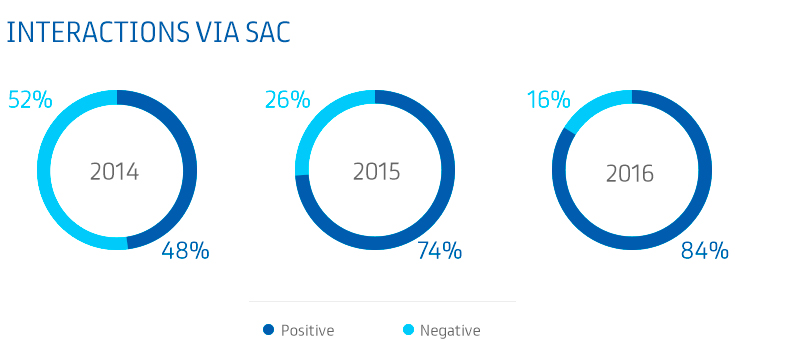Customers And Consumers
No there is no one better to attest to the quality of everything we produce than those who consume and buy our products. It is with this premise that our work is based on: keeping the constant search for the best experience of BRF consumers and customers, whether through the products we offer or the services we provide.
And if the consumer is at the center of our actions, they are the ones we want to hear. For this, we conducted constant tests with our potential audiences, in order to meet at expectations and ensure that the quality of our products is superior in the market. In addition, analytical laboratories conduct various evaluations of everything produced by BRF, ensuring that everyone has access to a safe food.
It is from the receipt of the information of all these evaluations that we seek ways to innovate in our production, offering a satisfying and unique experience of all that consume our foods.
A call center that goes far beyond just picking up information and receiving demands. An area that is prepared to listen, share information and find broad solutions, analyzed on a case-by-case basis. No protocols or ready answers.
It is at this moment that our SAC becomes a service of relationship with the consumer: when it seeks to guarantee the best possible experience in this journey of service with BRF and starts to create a constructive exchange, positive and friendly, listening to suggestions that improve our process productive.
All employees of the BRF call center have skills – excellence training, conversation and writing – that help us understand and work with the reality in which we live, contributing pertinent information that enables us to take future actions with greater efficiency.
As we operate in a global structure, our plant is prepared to work with the cultural differences of our consumers and customers, knowing how these particularities can impact the process. Therefore, we have adopted some strategies, such as questions about eating habits, to personally attend each consumer or client, guaranteeing full satisfaction in the service received.
We currently have advanced tools, focused on CRM (Customer Relationship Management strategies to manage these services. Upon receiving a call, the SAC forwards the demand to the responsible area. The deadline for resolving and returning the customer response is a maximum of five business days. Among the recent priorities is the adoption of a more proactive role for SAC in the production units.

The decision to buy a product and repeat that purchase at the point of sale depends on the experience with what was purchased. Therefore, it is essential to understand what happens to our merchandise on the shelves and compare with the performance of our competitors.
In order to verify that our consumers and customers will receive the product according to the desired standard, the sensory process team, allocated within the Quality area, is responsible for assuring the consumer’s desired quality standard: describe, standardize and monitor the evaluation method and the sensorial characteristics of the raw materials and ingredients, accompanying the stability of the final product in the market.
For excellence in results, the team must fulfill some care and good practices. Sensory laboratories follow corporate guides, such as the Training and Calibration Program. In it, we have the standards that the BRF sensory laboratories must look for, being an internal manual, and can not be made available. Responsible for this guide is the corporate sensory team.
Sensory analysts participate in the Sensory Training and Calibration Program, to ensure the accuracy of their analysis. This program includes criteria for selection of evaluators according to their sensory ability; training on good analytical and care practices for more accurate results; training for the sensorial evaluation of each product with practical and detailed material; and calibration and periodic recalibration to ensure the alignment of the perception between all of them.
In addition, analysts perform routine assessments of compliance with sensory standards, both in the release of the product at the factory and over the life of the product on the shelves, in order to guide the operation in case of possible deviations. These evaluations are performed by trained evaluators, who compare various characteristics of appearance, odor, taste and texture of the products with the standard sensory attributes, analyzing the possible variations and defects and aligning with the consumer’s desire.
